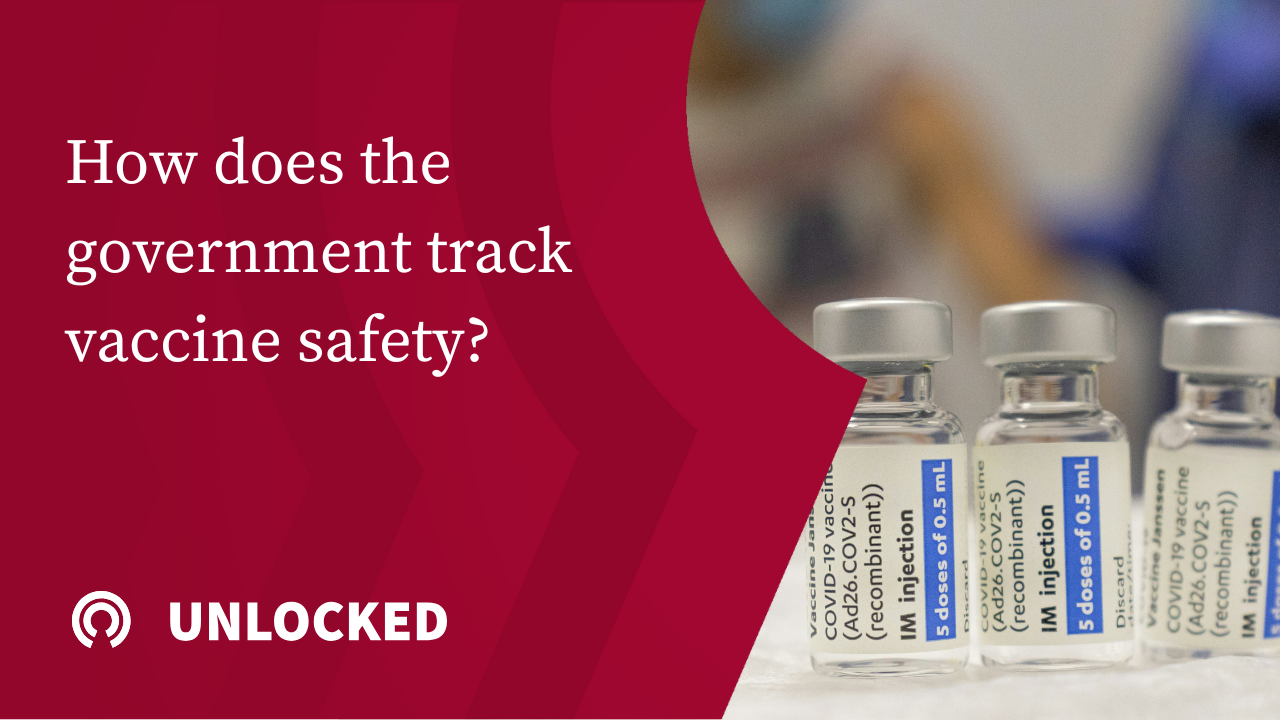The Journalist’s Resource’s explainer on childhood vaccine safety includes a primer on how the government tracks vaccine safety data. As changes are proposed to federal vaccine policy, this guide can help understand the implications of these changes.
How vaccine side effects are tracked in the U.S.
Before vaccines arrive on the market, they go through clinical trials. Once the U.S. Food and Drug Administration reviews a vaccine application and finds the vaccine safe and effective, it may grant the vaccine a license, also known as approving the vaccine.
The Advisory Committee on Immunization Practice, or ACIP, also reviews the data to decide whether a vaccine’s benefits outweigh its risks before recommending its use, as explained in a 2024 study published in the journal Pediatrics.
Although vaccine developers track common side effects during clinical trials, it’s not possible for them to design large enough studies to detect rare side effects that may affect one in 10,000 or 100,000 people.
To solve this problem, the U.S. developed robust surveillance systems in 1990. One of the most widely known programs is the Vaccine Adverse Event Reporting System or VAERS. The other is the Vaccine Safety Datalink, or VSD.
VAERS is a surveillance system managed by the Centers for Disease Control and Prevention and the FDA and acts as an early warning system for vaccine side effects. Anyone can file a report on VAERS.
“So, if you know something happens after a vaccine, and you’re not sure if it was the vaccine or not, you can report it to VAERS, and then, if it’s a potentially serious event, it gets further investigated,” says Dr. Sean O’Leary, chair of the Committee on Infectious Diseases at the American Academy of Pediatrics.
The VAERS data does not show causality. However, because its data is publicly available and downloadable, it’s been the focus of vaccine skeptics.
“I think people who are distrustful of the health care system view [VAERS] as the raw stories of people who believe they were harmed by vaccines,” says Dr. Kristen Panthagani, a third-year emergency medicine resident, founder of the website youcanknowthings.com and a contributor to Your Local Epidemiologist newsletter on Substack.
“It’s information that they can collect and analyze themselves since they don’t trust the people who are putting everything together and actually do it correctly, unfortunately,” she says.
The next layer of surveillance, the Vaccine Safety Datalink, helps researchers parse VAERS data and investigate potential links between vaccines and rare but serious side effects.
VSD is a collaboration between the CDC and 13 U.S. health care organizations. If there are strong signs of possible vaccine side effects in systems like VAERS, then researchers can use Vaccine Safety Datalink to perform more studies to see if there’s indeed an association between the shots and the side effects.
VSD has helped identify rare side effects, including the link between the MMR vaccine and immune thrombocytopenic purpura, a bleeding disorder where the immune system destroys platelets, which can occur in one in 40,000 vaccinations. It has also shown an association between MMR and varicella vaccines and febrile seizures, which can occur in 4.3 of 10,000 vaccinations.
“Perhaps more importantly, the VSD has been able to demonstrate the lack of association of numerous vaccines with purported vaccine adverse events,” O’Leary and his co-authors write in the 2024 study “Strategies for Improving Vaccine Communication and Uptake.”
“In summary, vaccines are comprehensively evaluated by the FDA for safety, effectiveness, and manufacturing quality before their authorization or licensure,” the authors write. “Vaccines are developed and tested in large numbers of subjects, are regulated by the FDA, and undergo rigorous monitoring after licensure through a comprehensive safety surveillance system funded by the CDC and FDA. In instances in which safety concerns are identified, regulatory or other actions to safeguard public health are taken.”
There are two other systems tracking vaccine safety: the FDA’s Biologics Effectiveness and Safety (BEST) system, which uses real-world data, including electronic health records, insurance claims and patients registries to assess the safety and effectiveness of vaccines that are already on the market; and the Clinical Immunization Safety Assessment Project, a collaboration between CDC and medical research centers.
Read the full explainer: Childhood vaccines: What research shows about their safety and potential side effects at The Journalist’s Resource.


